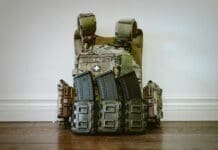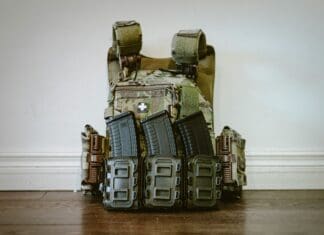This post is also available in:
 עברית (Hebrew)
עברית (Hebrew)
Workplace accidents are a challenging problem all over the world. In January, US President Biden signed an executive order protecting worker health and safety and pushing for additional resources to help employers protect employees. Addressing hazardous workplaces — due to COVID-19 or even the physical work environment itself — through technological advancements has become a clarion call and may be critical to saving millions of workers’ lives.
A technology first tried in the military sector has turned up useful in the prevention of work accidents. Flexible sensors can alert workers and managers to danger at the earliest opportunity.
The technology has had a trial run in the military. Through initial R&D with the military, a company called Aptima first zeroed in on addressing dangerous work environments for soldiers – namely confined spaces in the presence of dangerous fumes and chemicals, or areas where workers face far greater risk of injury or death when inadequately monitored.
Through partnerships with NextFlex, the U.S. Air Force, and Lockheed Martin, Aptima has developed an IoT approach to worker wearable technology, zdnet.com reports.
The technology fuses a combination of environmental, human, and locational data from the worker, analyzes it in the cloud, and provides real-time detection and alerting through its SafeGuard software platform.
After working with the military, Aptima zeroed in on addressing dangerous workplace environments using similar technology applications. Research showed that there is a dire need for occupational safety in defense and industrial systems, so the company immediately began its journey to commercializing a multi-use solution that uses wearables and intelligent monitoring as its core.
SafeGuard platform fuses together wearable sensor data, AI analytics, and operational context to personalize worker safety monitoring and continuously monitor workers in a variety of dangerous occupational settings.
There are still barriers that have to be taken into account in implementing wearable technologies, such as concerns regarding employee privacy/confidentiality of collected data, employee compliance, sensor durability, the cost/benefit ratio of using wearables, etc.

























